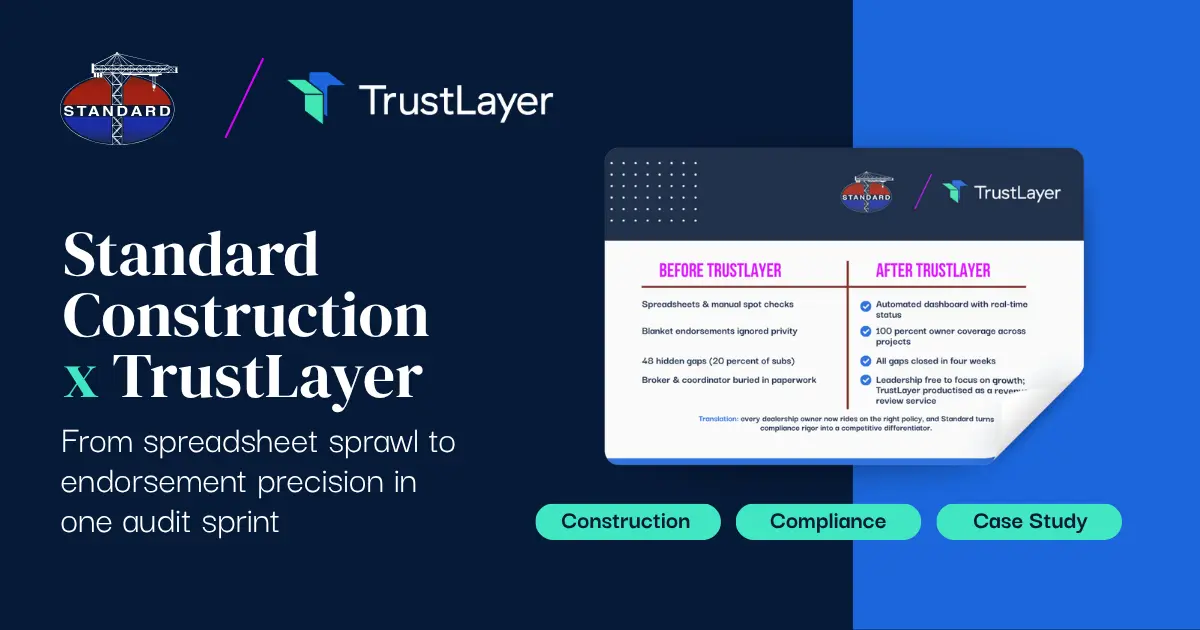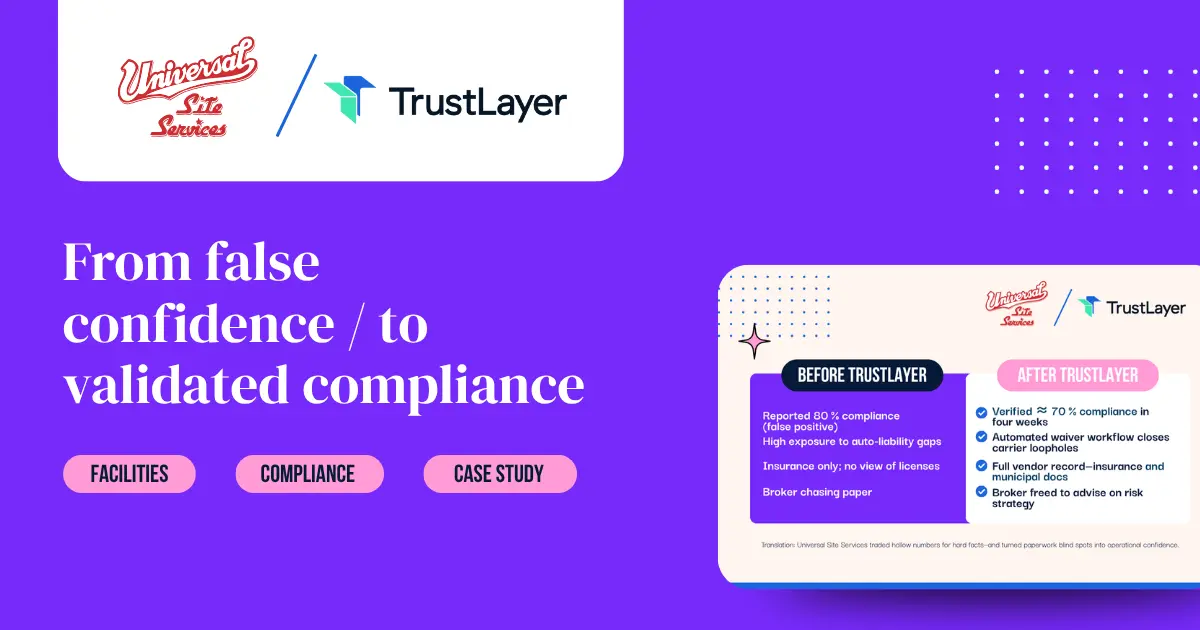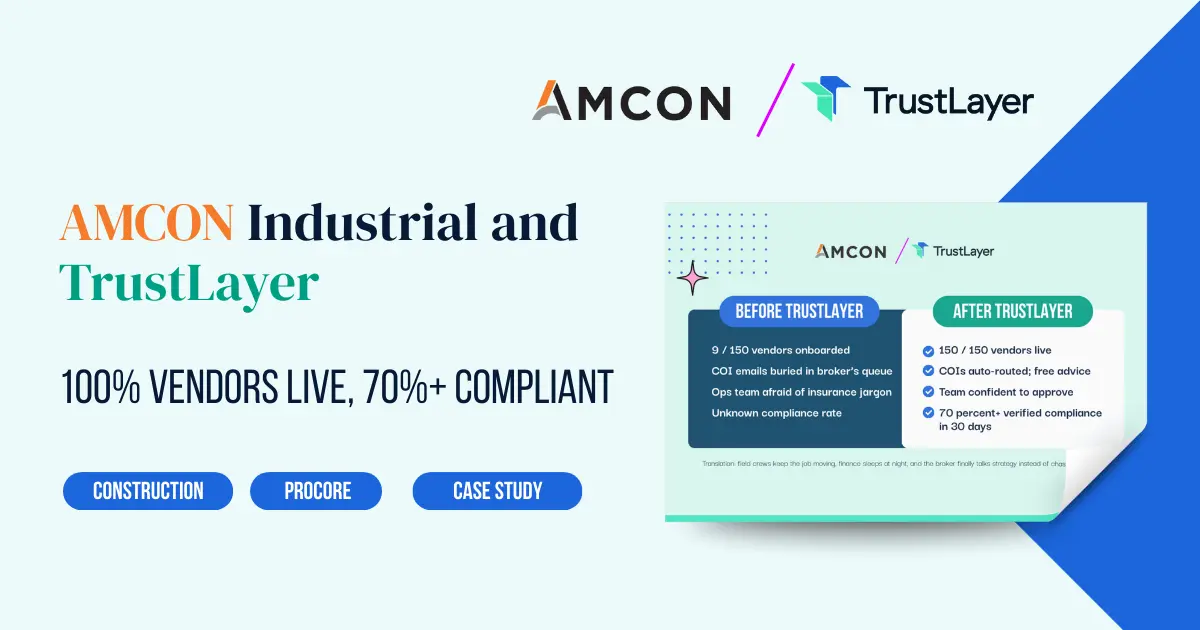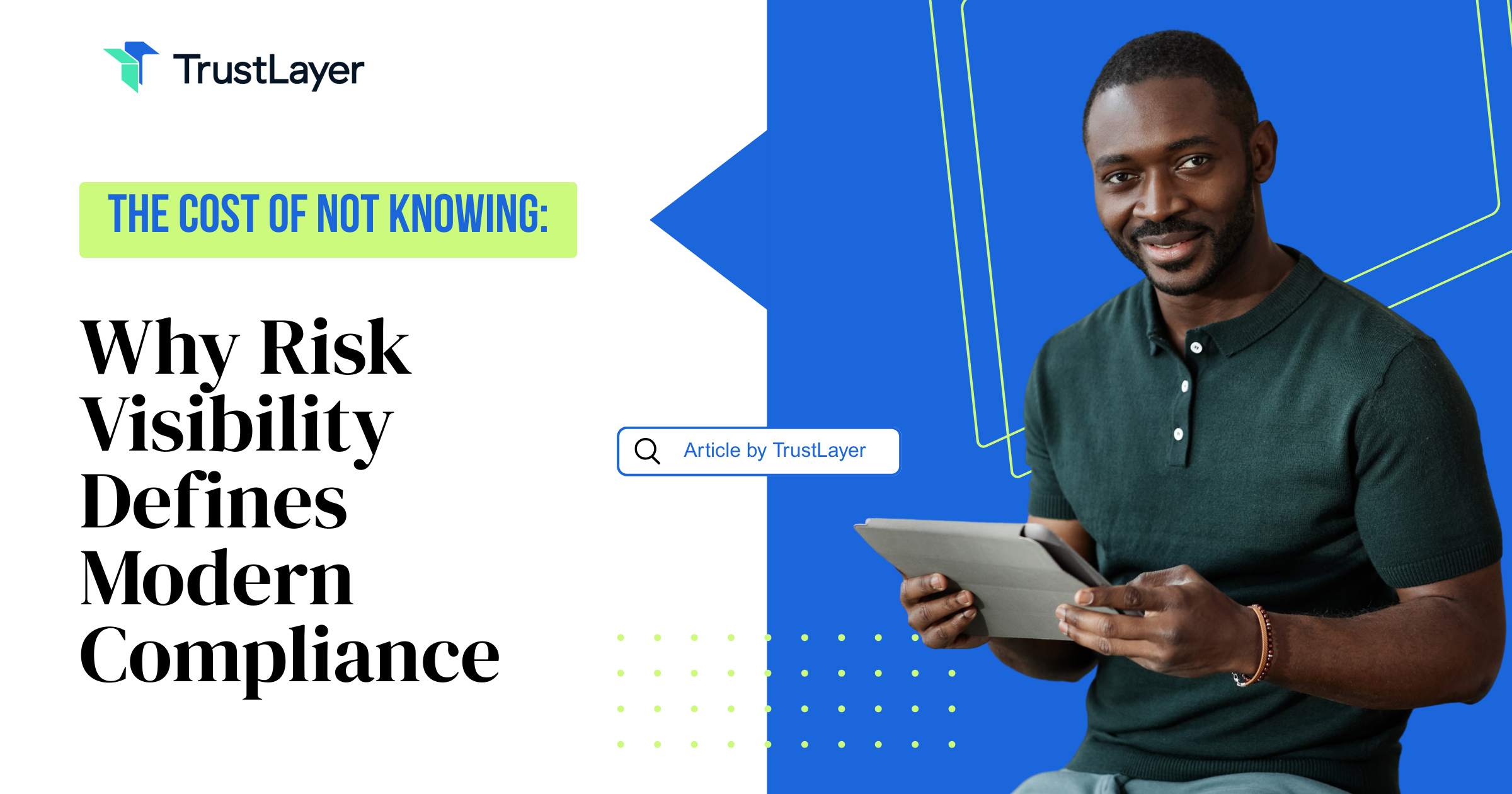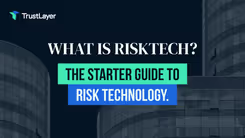The Compliance Leader’s Guide to Risk Matrix Software

Risk management is critical to compliance, especially in today’s rapidly changing regulatory environment. As organizations strive to meet compliance standards, adequate risk visibility becomes increasingly important. This guide explores how risk matrix software can enhance compliance efforts, streamline processes, and provide valuable insights into risk management.
Why Compliance Needs Better Risk Visibility
Organizations face many risks in the complex compliance landscape that can impact their operations, reputation, and bottom line. Traditional risk assessment methods often fall short, leaving compliance leaders with limited visibility into potential threats. Enhanced risk visibility is essential for identifying vulnerabilities, assessing their potential impact, and implementing effective mitigation strategies.
Moreover, regulatory requirements are evolving, and organizations must adapt to comply with mandates. A lack of visibility can lead to non-compliance, resulting in penalties, legal issues, and damage to an organization’s reputation. By leveraging risk matrix software, compliance leaders can gain a comprehensive view of their risk landscape, enabling them to make informed decisions and prioritize resources effectively.
Investing in better risk visibility not only aids in compliance but also fosters a culture of proactive risk management. Organizations that embrace transparency and accountability are better positioned to navigate challenges and seize opportunities, ultimately enhancing their resilience in an unpredictable environment.
Furthermore, integrating advanced analytics and real-time monitoring tools can significantly elevate an organization’s ability to detect and respond to emerging risks. These technologies allow compliance teams to quickly analyze vast amounts of data, identifying patterns and anomalies that may indicate potential compliance breaches. By harnessing the power of artificial intelligence and machine learning, organizations can automate risk assessments and streamline their compliance processes, reducing the burden on human resources while increasing accuracy and efficiency.
Additionally, fostering a culture of risk awareness throughout the organization is crucial. Training employees at all levels on compliance and risk management empowers them to recognize potential issues and encourages a collective responsibility towards maintaining compliance standards. Regular workshops and updates on regulatory changes can keep staff informed and engaged, creating an environment where compliance is viewed as a shared goal rather than a mere obligation. This holistic approach strengthens the organization’s compliance posture and builds trust with stakeholders, clients, and regulatory bodies, reinforcing the organization’s commitment to ethical practices and governance.
What Is Risk Matrix Software?
Risk matrix software is a specialized tool designed to help organizations assess, visualize, and manage risks systematically. At its core, this software allows users to create a risk matrix—a visual representation of risks that categorizes them based on their likelihood and potential impact. This matrix helps compliance leaders prioritize risks and develop appropriate responses.
Typically, risk matrix software offers features such as customizable risk assessment templates, real-time data analytics, and reporting capabilities. These functionalities enable organizations to evaluate risks consistently and efficiently, ensuring that all relevant factors are considered in the decision-making process. Additionally, many risk matrix tools integrate with existing compliance management systems, providing a seamless experience for users.
By utilizing risk matrix software, organizations can enhance their ability to identify, assess, and mitigate risks. This improves compliance efforts and supports overall business objectives by fostering a proactive approach to risk management.
Moreover, risk matrix software can be instrumental in promoting a culture of risk awareness within an organization. Providing a clear visual representation of risks encourages team members at all levels to engage in discussions about risk management. This collaborative approach can lead to more comprehensive risk assessments, as diverse perspectives are considered, resulting in more robust risk mitigation strategies. Furthermore, many of these tools offer training modules and resources to help staff understand risk management, reinforcing the organization's commitment to maintaining a safe and compliant environment.
In addition to enhancing internal communication, risk matrix software can also facilitate better stakeholder engagement. Organizations can effectively communicate their risk profiles to external stakeholders, including investors, regulatory bodies, and clients, by generating easy-to-understand reports and dashboards. This transparency builds trust and demonstrates a commitment to responsible risk management practices. As organizations increasingly face complex regulatory landscapes and heightened scrutiny, the ability to showcase a thorough and systematic approach to risk assessment becomes a significant competitive advantage.
Automating Third-Party Risk Checks
In an interconnected business environment, third-party relationships are essential for many organizations. However, these relationships also introduce additional risks that must be managed effectively. Automating third-party risk checks is a crucial aspect of compliance that can be streamlined through risk matrix software.
Automated risk checks allow organizations to assess the risk profiles of their third-party vendors quickly and efficiently. By integrating data from various sources, risk matrix software can comprehensively view a vendor’s risk status, including financial stability, compliance history, and potential operational risks. This automation reduces the manual effort required for risk assessments and minimizes the likelihood of human error.
Furthermore, automated third-party risk checks enable organizations to monitor their vendors continuously. This continuous oversight is vital for identifying emerging risks and ensuring compliance standards are upheld throughout the partnership. By leveraging risk matrix software for third-party risk management, organizations can enhance their compliance posture and protect themselves from potential liabilities.
Automating risk checks can improve efficiency and enhance the quality of the data collected. Advanced risk matrix software often utilizes machine learning algorithms to analyze patterns and predict potential risks based on historical data. This predictive capability allows organizations to address vulnerabilities proactively before they escalate into significant issues. For instance, if a vendor's financial stability declines, the software can alert the organization to take preemptive action, such as renegotiating contract terms or seeking alternative suppliers.
Moreover, integrating automated risk checks fosters a culture of transparency and accountability within organizations. By having a clear and consistent process for evaluating third-party risks, stakeholders can make informed decisions based on reliable data. This strengthens the organization’s risk management framework and builds trust with partners and clients, as they can see that the organization is committed to maintaining high compliance and risk mitigation standards. As businesses navigate an increasingly complex regulatory landscape, automated third-party risk checks will become more critical in safeguarding their interests and ensuring sustainable growth.
Audit-Ready Reports in Minutes
Compliance audits can be daunting, often requiring extensive documentation and preparation. However, risk matrix software simplifies this process by generating audit-ready reports in minutes. These reports provide a clear overview of an organization’s risk management efforts, making demonstrating compliance to auditors and regulatory bodies easier.
With the ability to customize reporting templates, compliance leaders can tailor reports to meet specific audit requirements. The software compiles data from various assessments and presents it in a structured format, highlighting key findings and risk mitigation strategies. This saves time and enhances the accuracy of the information presented during audits.
Moreover, having readily available reports fosters transparency and accountability within the organization. Compliance leaders can easily share insights with stakeholders, ensuring everyone is aligned on risk management priorities and strategies. This level of preparedness boosts confidence during audits and reinforces a culture of compliance throughout the organization.
In addition to streamlining the reporting process, risk matrix software often includes features allowing real-time updates and notifications. As new risks are identified or existing ones are mitigated, the software can automatically adjust the reports to reflect the most current information. Such dynamic reporting capabilities ensure compliance leaders always work with the latest data, which is crucial in today’s fast-paced regulatory environment.
Furthermore, integrating analytics tools within the software can provide deeper insights into risk trends over time. By analyzing historical data alongside current assessments, organizations can identify patterns indicating emerging risks or areas needing improvement. This proactive approach not only aids in compliance but also empowers organizations to make informed decisions that enhance their overall risk management framework.
How to Get Started with TrustLayer
Getting started with TrustLayer, a leading provider of risk matrix software, is a straightforward process that can significantly enhance an organization’s compliance efforts. The first step involves assessing the organization's needs and determining how risk matrix software can best support its compliance objectives. This initial assessment is crucial, as it allows organizations to pinpoint their unique challenges and compliance requirements, ensuring that the software implementation is tailored to their specific context.
Once the requirements are identified, organizations can engage with TrustLayer to explore the features and capabilities of their software. This may include demonstrations, consultations, and discussions about integrating existing systems. TrustLayer’s team can provide valuable insights into how their software can streamline risk management processes and improve overall compliance. During these interactions, organizations can also learn about best practices from other clients and industries, which can further inform their approach to risk management and compliance.
After selecting the appropriate features, organizations can begin the implementation process. This typically involves configuring the software to align with the organization’s risk assessment methodologies and compliance standards. Training sessions for staff members are also essential to ensure users are comfortable navigating the software and effectively leveraging its capabilities. Moreover, ongoing support from TrustLayer can help organizations troubleshoot any issues that arise during the initial rollout, ensuring a smooth transition and minimizing disruptions to daily operations.
As organizations begin to utilize TrustLayer, they can expect to see improvements in their risk visibility, third-party risk management, and reporting capabilities. By embracing technology and innovation in compliance, organizations can position themselves for success in an increasingly complex regulatory landscape. The software not only aids in identifying potential risks but also fosters a culture of proactive risk management, where organizations can continuously monitor and adapt their strategies in response to evolving regulatory requirements and market conditions.
In addition to enhancing risk visibility, TrustLayer’s software can facilitate collaboration across departments, breaking down silos that often hinder practical compliance efforts. By providing a centralized platform for risk management, teams can share insights and data more freely, leading to a more cohesive approach to compliance. This collaborative environment empowers organizations to respond more swiftly to compliance challenges, ensuring that they remain agile and well-prepared to tackle any issues that may arise.
As organizations integrate TrustLayer into their operations, they will find that the benefits extend beyond compliance, fostering a more resilient and informed organizational culture.
Ready to transform your compliance and risk management processes with cutting-edge technology? TrustLayer is your partner in modernizing risk management, offering the best-in-class certificate of insurance (COI) tracker trusted by hundreds of thousands of companies. Say goodbye to the administrative burden of manual document verification and embrace a solution that automates and streamlines your compliance document workflows. Join the forward-leaning modern risk managers already experiencing the benefits of TrustLayer's innovative approach. Don't let legacy processes hold you back. Set up a time to talk with our team and discover how we can help you build following practices to elevate your risk management strategy.




